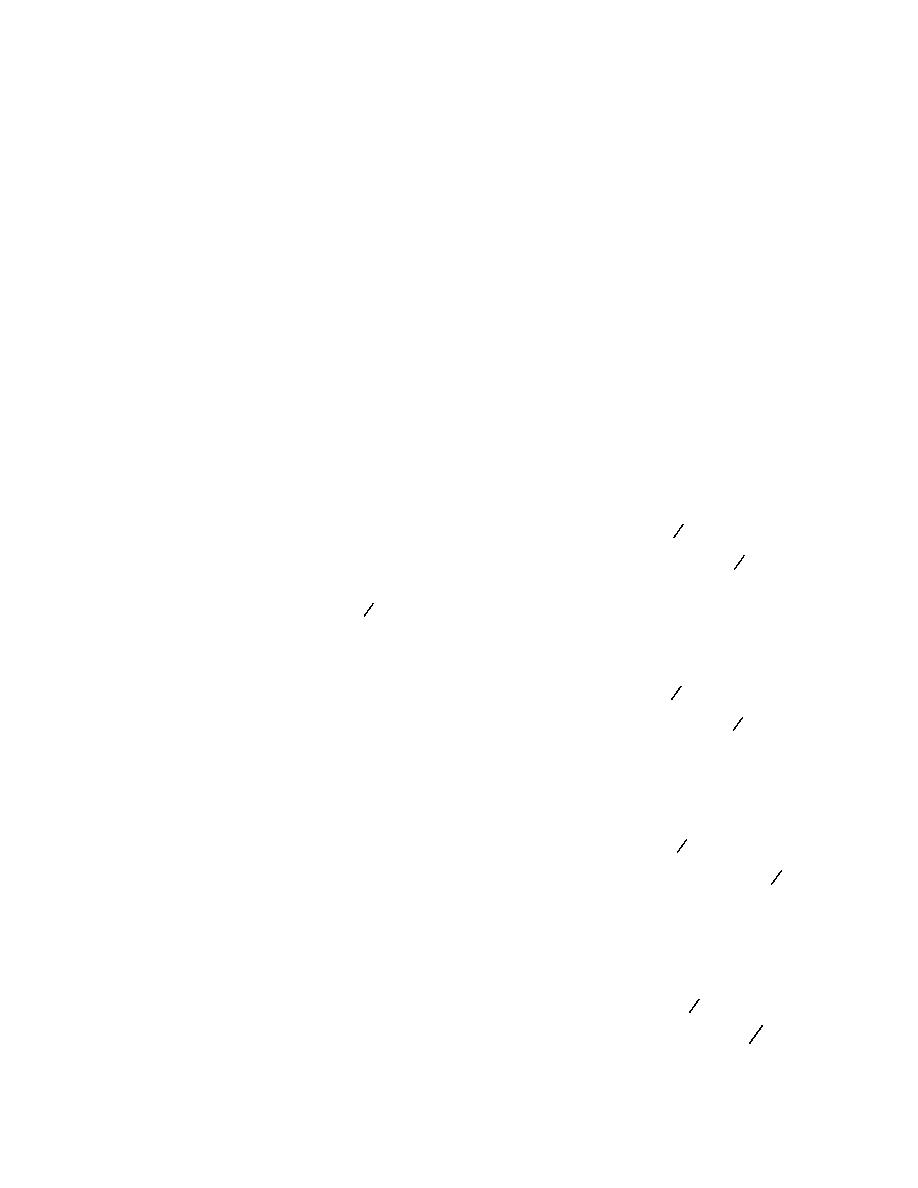
APPENDIX A: ESTIMATING DIELECTRIC CONSTANTS
Standard references list dielectric constants for
dently before developing a dielectric constant for
a range of materials that are similar to the indi-
concrete. Estimates for individual concrete com-
ponents and for 28-day old concrete are provided
vidual components found in concrete. For exam-
next.
ple, the Handbook of Physics and Chemistry (1977)
lists calcium carbonate and quartz, of which
sand, coarse aggregate, and cement can be partly
SAND
or entirely composed of, as possessing dielectric
Natural sand, which is mostly quartz, was
constants between 4 and 7. Water and air, which
used in this study. The Handbook of Physics and
also make up concrete, have dielectric constants
Chemistry (1977) lists quartz's dielectric constant
of about 80 and 1, respectively. Since no dielectric
as 4.34. We determined the sand to have an ab-
constant is listed for concrete and since concrete
sorption (ASTM C 128) of 1.1%, bulk specific
consists of a mixture of dielectrics, individual val-
gravities (ASTM C 128) of 2.67, saturated surface-
ues must be used to estimate the overall dielectric
dry gravities, 2.64, oven dry, and a void ratio
constant of concrete. To make this estimation, a
(ASTM C 29) of 0.32.
mathematical weighting scheme of the different
1. Since bulk sand consists of sand particles
dielectrics must be applied based on the volume
and interparticle void spaces, its overall oven-dry
fraction of each in concrete. Ansoult et al. (1984),
dielectric constant (Kbs/od) becomes
provides a convenient formula for estimating the
overall dielectric response of a heterogeneous
Kbs/od = [VsKs + Va Ka ]
1
α
α
α
mixture such as concrete:
Kbs/od = [0.68 4.345 + 0.32 1.5 ]
1
Kconc = [
0.5
α
α
α
+ Va Ka
+ Vw Kw
Vc Kc
Kbs/od = 3.02.
+VsKs + Vca Kca + Vuc Kuc ]
1
α
α
α
α
2. The void-free dielectric constant (Kvf) of
where V is the volume fraction, and K is the
sand was derived from the textbook value as fol-
dielectric constant. α can be any value between 1
lows:
and +1. The +1 considers a situation where the
Ks = [VKvf + Va Ka ]
1
α
α
α
dielectrics are being analyzed in a parallel config-
uration and 1 considers them to be in series.
4.34 = [0.989Kvf5 0.011 10.5 ]
1
0.
0.5
Since concrete ingredients are randomly distrib-
uted, being neither a parallel or a series configu-
Kvf = 4.39.
ration, we chose an intermediate value of 0.5.
3. When the intraparticle voids are water filled
(Press et al. [1986] found α = 0.46 to fit the situa-
the dielectric constant of the individual sand par-
tion for soil.)
ticles (Kis/wf) becomes
The subscripts represent
Kis/wf = [VKvf + Vw Kw ]
1
conc = concrete
α
a
a
c = hydrated cement
Kis/wf = [0.989 4.390.5 + 0.011 800.5 ]
1
a = air
0.5
w = water
Kis/wf = 4.71.
s = sand
ca = coarse aggregate
4. Finally, the dielectric constant of bulk sand
uc = unhydrated cement.
with its intraparticle voids water-filled and its in-
terparticle voids air-filled (Kbs/ssd) becomes
The dielectrics that are listed in handbooks for
[
]
geological material are for single pieces of materi-
1
Kbs/ssd = VKiα/wf + Va Ka
α
α
al in an oven-dry condition. This does not repre-
s
[
]
1
sent how they are used in concrete. To more close-
0.5
0.5
0.5
Kbs/ssd = 0.68 4.71
+ 0.32 1
ly approximate in-situ dielectric constants, we
analyzed each component of concrete indepen-
Kbs/ssd = 3.22.
9



 Previous Page
Previous Page
